The document outlines a full-day tutorial on critical thinking for software testers, presented by Michael Bolton, who emphasizes the importance of critical thinking in software testing. It covers topics such as cognitive biases, assumptions vs. inferences, and the significance of diverse perspectives in testing. The goal is to equip testers with the necessary skills to identify and address problems in logic and decision-making processes within software testing contexts.

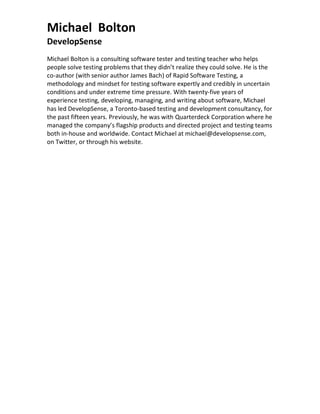

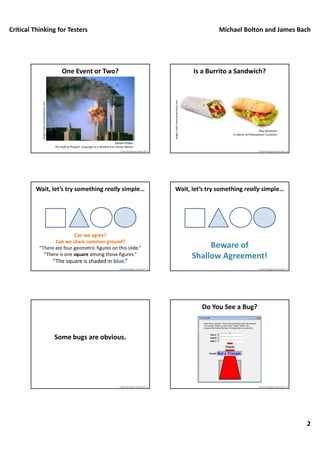




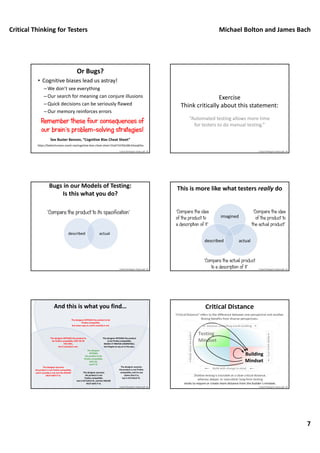

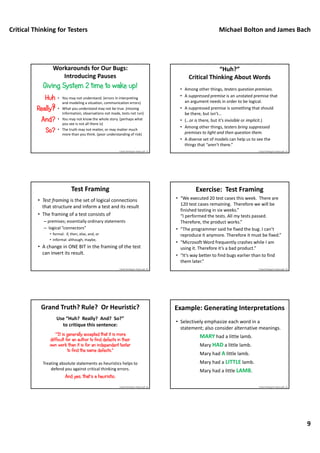









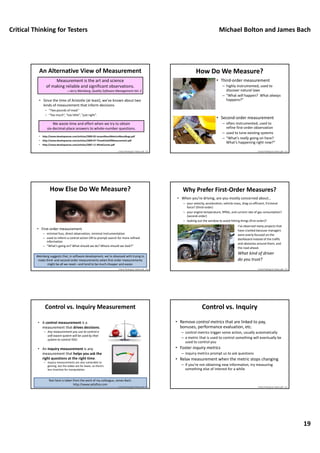





![Critical Thinking for Testers Michael Bolton and James Bach
25
Conditional Probability
Reasoning about it is HARD.
Unhappy
test result
Thesepeoplehavethedisease
These people are fine.Happy
test result
These people are fine too.
9990
.99
10
.01
Critical Thinking For Testers.pdf ‐ 148
Conditional Probability
Uh-oh.
Yay!But…Ooops.Missedit.
No problemo.Yay!
Sorry we freaked you out.
Bad
news.
Try considering the number of people in the overall population who have
the disease BEFORE considering the test result.
Critical Thinking For Testers.pdf ‐ 149
Would banning fighting reduce
hockey injuries?
• [a] study analyzed approximately 1,410 NHL games
during 30 randomly selected weeks between the 2009‐
10 and 2011‐12 seasons. It found that 8.8 concussions
or suspected concussions occurred per 100 NHL
games. Of these injuries, 0.8 of a concussion per 100
games was attributed to fighting and the other eight
were caused by a variety of means, the most common
of which were “Bodychecking with head contact” and
“Bodychecking with no head contact.”
• The study found that a player was more likely to suffer
a concussion by getting hit in the face by a puck than
by fighting.
Critical Thinking For Testers.pdf ‐ 150
Do you agree?
• “It is clear that we could immediately eliminate the
0.8 of a fight per 100 games if fighting were banned
from the NHL. But… the elimination of fighting will
lead to more reckless and dangerous actions on the
ice. Those other eight concussions per 100 games are
going to increase, perhaps dramatically.”
Bobby Smith, The Globe and Mail
http://www.theglobeandmail.com/sports/hockey/end‐to‐
fighting‐would‐not‐make‐hockey‐a‐safer‐
game/article29300049/
How would you test this statement?
Critical Thinking For Testers.pdf ‐ 151](https://image.slidesharecdn.com/ma15-181019024542/85/Ma-15-27-320.jpg)